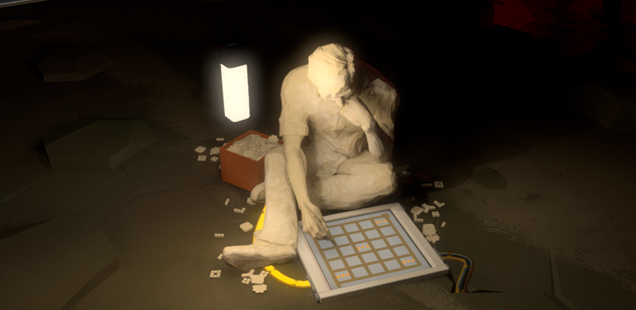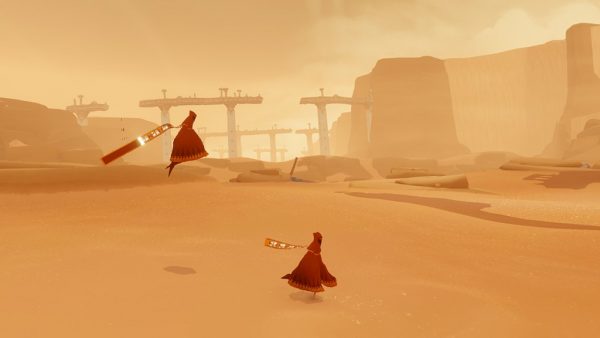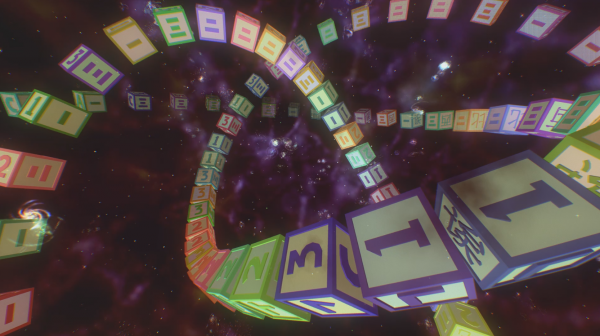
Games to Practice Self-Awareness and Mindfulness
Ruby Hall levels up in real life.
Every game is purposefully designed.
People turn to video games as a source of entertainment—to engage with exciting stories, artful direction, and excellent music. However, have you ever thought about using games to practice mindfulness? Mindfulness is the act of directing our attention to what’s happening at the moment. That is, with an open mind and a kind attitude towards ourselves and the experience. Yoga ambassador Sara Clark has featured a couple of benefits gained from exercising mindful practices, such as stress relief, better sleeping and eating habits, as well as healthier relationships.
It may seem unconventional, but video games have many principles that make them useful for teaching us this practice.
Games and Mindfulness
One of the most common ways to practice mindfulness is to meditate and be closer with your emotions. Therapist Andrew Fishman explains that meditation requires a state of being “in the zone”, or the feeling of total immersion. Since many games are made up of small, achievable tasks, they’re ideal for putting you into a trance-like state. Games have a way of breaking down tasks into steps with known solutions, making an otherwise impossible feat seem intuitive and solvable. This mechanic allows you to be so focused on the goals that you’re slowly pulled deeper into the world. In fact, a study published in the Journal of Medical Internet Research found that digital games can help you recover from a long day, similar to how mindfulness apps would.

But it’s not just through rejuvenating us that video games can help us be more mindful. Part of self-awareness is maintaining a level of curiosity and interest in one’s surroundings, which is a skill developed, in large part, by open-world and exploratory games like The Legend of Zelda: Breath of the Wild, Final Fantasy XV, and The Witcher 3. Sure enough, Research by the Entertainment Software Association reveals that video games can make people more creative and naturally curious thinkers. An article on self awareness by lifestyle writer James Gonzales highlights how those who are most successful often have an applied curiosity. This means that any activity that encourages problem solving and exploration, like video games, could help you have increased self awareness and become “more creative and open to new and innovative ideas.” In video games, you definitely need to pay attention to your environment to uncover secret paths, hidden treasures, and more. This contributes to our overall sense of awareness—a trait that can easily bleed into real life.
Video games, especially those that are played over the network like MMORPGs and online co-op titles like Splatoon, Trine, and We Were Here, have also become a subtle way of teaching you to be more mindful. After all, to be able to accomplish quests and hard-hitting levels, you need to work as a team and be constantly aware of things that can be used to your advantage. This means doing things like watching the terrain and noting how your teammates move to be able to coordinate attacks.
Every video game is designed differently, which makes their purposes different, too. These six exemplary examples show how video games can be used to practice mindfulness in real life—whether as tools to help you achieve mindfulness mid-play, or as introductions to the concept of self-awareness in the storyline itself.

Elder Scrolls V: Skyrim
If there was ever a crown for the king of open-world RPGs, it would easily go to Skyrim. Besides having one of the biggest video gaming maps to date, there’s also much to do that can be done with very little thought.
Whether it’s climbing mountains, smelting some iron, or scavenging for resources, the game has these little moments that build the feeling of total immersion until you eventually reach a trance-like state. In this manner, Skyrim becomes a tool that can help you meditate.
However, the beauty of Skyrim doesn’t stop there. Because it’s open-world, it’s meant to emulate the real-life feelings of exploration and natural wonder. You can do mundane things like pick flowers and watch animals—mindful behaviors that are especially beneficial for those in urban areas. The game even has totems, emblems, and quotes randomly distributed along your path. You can choose to ignore them, but their well-crafted designs make them hard to ignore. They act as reminders that there’s beauty to be found everywhere, no matter how small.
Minecraft
There’s a reason why Minecraft appeals to every demographic. Its simple mechanics and toybox-like setting are great for kids who want to test the limits of creativity. But for older teens and adults, the mindfulness aspect of the game becomes more apparent. The world of Minecraft is so vast and unpredictable that you could be mining in a second, but be chased by monsters at the next. It forces you to be self-aware at every given moment, and adapt to whatever changes the game throws at you. All in all, it’s a fun, intuitive way to sneak in some mindfulness and sharpen your attention span.
Another aspect of Minecraft to look into is its world-building feature. There are no pre-rendered objects in Minecraft. Everything starts with a block. From there, you virtually create anything—from castles and temples, to infrastructures and vehicles. Building such things takes immense levels of focus, so it forces you into the present. Think of it as creating structures from virtual Legos. The latter of which studies on Fatherly describe as “zen in the shape of a brick” due to the therapeutic nature of creating something from scratch.

Laserlife
Rhythm game Laserlife is told through artifacts that narrate the story of a dead spaceman, and serve as small traces of evidence that you piece together on your journey. To play, you manipulate two flowing tendrils through a rough series of paired musical notes. If you get distracted by the floating pieces that represent the astronaut’s shattered memories, you’ll very likely miss the next note. Similar to meditation, Laserlife teaches you not to be distracted by wandering thoughts.
Furthermore, Laserlife presents a contemplative story. In a previous post, writer Daria Kalugina discussed how Laserlife can also function as a manual for self-visualization. The human in the story is not the main actor, but the subject. Stripped of their agency, they surrender themselves to the eyes of the alien in its journey to understand the astronaut. You could say that one must learn to look at their lives from a dispassionate, external perspective to understand the self much better.
ABZU
In video game history, the act of swimming tends to come with the infamous air gauge: a timer or health bar that slowly depletes the longer you stay underwater. ABZU, however, completely throws the concept away. It has you play as a diver who explores the ocean’s depths with an infinite supply of air.
At the beginning of the game, there’s a great white shark who eats your drone, which is your only ticket back to the surface. Since you can no longer rely on technology, you’ll need to find other ways to get around. This leaves you following fishes or looking for subtle signs. This roundabout journey takes you through breathtaking caverns, gorgeous reefs, and a lot of other underwater treasures. This begs the question: was the great white really the enemy? In this journey that teaches you the importance of slowing down, you’ll find yourself learning how to appreciate the little things you encounter along the way.

Journey
Journey is a simple adventure game that follows the story of a robed figure making its way around dream landscapes. Playing it alone doesn’t seem that impressive. But the reason why it has been labeled as one of the “Best PS3 Games of All Time” is its real-time co-op mechanic. You’ll meet other players by chance, as long as they’re currently in the same environment as you. Think of it as finding people on the same, literal wavelength. After assisting them with their tasks or simply hanging out, you can then choose to enter a journey with them or go your separate ways.
Journey is a quiet, meditative game on solitude, bonds, and the interconnection of people. The mood of the ending is heavily dependent on how you go about your journey and with whom, further stressing the importance of how your decisions affect other lives, and vice versa.
Tricky Towers
In a frustrating Tetris race with no walls to contain your construction or pieces that fit properly, Tricky Towers is a perfect representation of how life works. Your goal is to build a tower tall enough to reach the “finish line,” pitting yourself side-by-side with one or two other players. It’s tricky but relatively simple to stack your blocks.
However, when you find yourself distracted by the construction of the other towers or impatiently dropping blocks, it’ll be no surprise to see your tower fall down. Aside from forcing you to focus on the present, this game also teaches us that life is not a race.

Be it using thought-provoking gameplay or open-world exploration, video games have the uncanny ability to introduce and promote mindfulness in every aspect of their design. Regardless if you’re into beat games, block-stacking, open-world JRPGs, or thoughtful journeys across the universe, any game can become a meditative journey if you let it.
Ruby Hall is an avid gamer, with a penchant for titles with deep plots, expansive lore, and great characterizations. With every article, she aims to convince more people to start playing, highlighting games’ sheer diversity.